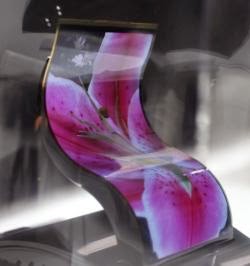Dad, what do you do at work? The answer is finally here - The Hafnium FET - Your kids will love this video!
Dr. Mathew D. Halls, Director of Materials Science, will present "Quantum discovery, analysis, and optimization of reactive precursors for thin-film deposition with the Materials Science Suite" on Thursday, February 20. Dr. Halls will provide an overview of the Materials Science Suite applied to reactive precursors and demonstrate the use of high-throughput quantum chemistry to more reliably identify candidate organometallic precursors based on chemical reaction energetics for model surface reaction pathways.
Quantum discovery, analysis, and optimization of reactive precursors for thin-film deposition with the Materials Science Suite
Dr. Mathew D. Halls
Senior Director, Materials Science
Senior Director, Materials Science
First-principles simulation has become a reliable tool for the prediction of structures, chemical mechanisms, and reaction energetics for the fundamental steps in processes such as Atom Layer Deposition (ALD). In addition to reaction energies and structural information, quantum-based simulation can also be used to compute vibrational spectra, enabling the conclusive assignment of gas-phase precursor and surface adsorbate-related bands. Such predictive capability raises the possibility for computational discovery and design of new reactive precursors with enhanced properties. Computational structure enumeration of precursor libraries and the automated quantum mechanical analysis of reaction energies opens a new mode of computational discovery for reactive systems.
In this presentation, Dr. Halls provides an overview of the Schrödinger Materials Science Suite applied to reactive precursors and demonstrates the use of high-throughput quantum chemistry to more reliably identify candidate organometallic precursors based on chemical reaction energetics for model surface reaction pathways.
In this presentation, Dr. Halls provides an overview of the Schrödinger Materials Science Suite applied to reactive precursors and demonstrates the use of high-throughput quantum chemistry to more reliably identify candidate organometallic precursors based on chemical reaction energetics for model surface reaction pathways.
Webinar February 20th, 2014 15:00 CET
Registration: Here



%20(1).png)











